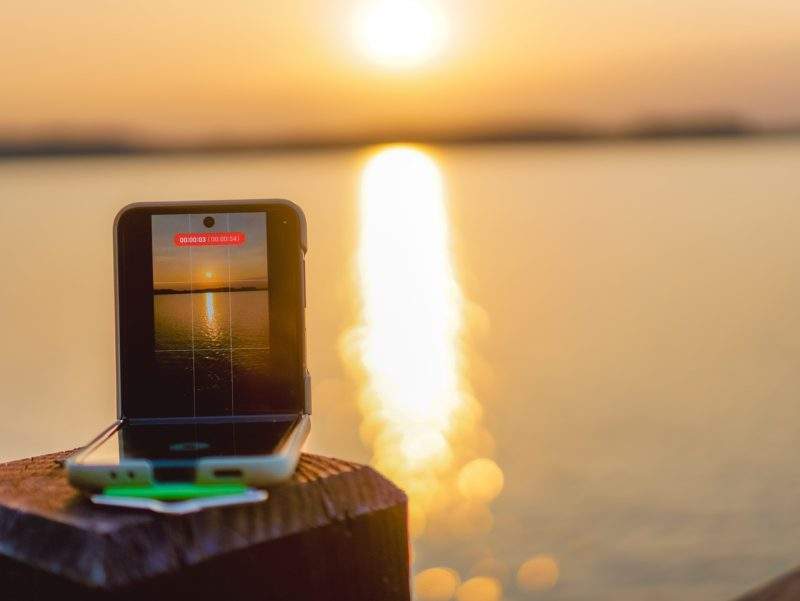Now firmly in their fourth generation, flip phones have proven themselves as more than just one-offs. With new devices like Motorola’s Razr on the horizon, their increasing popularity has made us question the functionality offered by the small square secondary exterior screen. Unlike their folding cousins, the space available on this exterior screen is limiting in both visual space and aspect ratio. Does this make it useless, or could the smaller display provide implications for future exploration of mobile display technology?
The Razr Example
According to leaks and official statements from Motorola, the rollout of their new generation of phones should occur on June 1, 2023. Two mobiles are currently slated for release, ostensibly targeting both premium and regular models.
When opened, these will operate as typical modern phones, but more interesting to us is the smaller external displays which are still exploring new ground. Operating at 1066×1056 pixels at 3.5 inches, these smaller displays have been shown to allow a range of features, the usefulness of which has us wondering.
A Deviation from the Norm
Before the arrival of the smartphone, it was often joked that mobiles were going to continue to shrink. Smartphones bucked what was then a trend, now growing to a point where some pockets can’t contain the larger and more popular models on the market.
In this way, the smaller size and exterior display of devices like the Razr are almost anachronistic in their challenging of the status quo. By offering a smaller square screen, they’re essentially acting as a larger smartwatch display, with similar implications for visibility and use.

On the positive use side of the equation, smaller displays can be perfect for the simplest applications and uses. Reading text messages is perfectly easy on these displays, as is using maps, or jumping between music or audiobooks. Beyond this point is where things get more complicated.
In the middle ground are experiences that excel on smartphones, but haven’t yet been fully explored on smaller displays. Online betting services are a strong example here, as a market that’s exploded in the smartphone realm.
Mobile deposit casino titles like Crazy Time and Lighting Roulette have been developed with flexible HTML5 backing, so scaling to smaller displays is no problem. The same can be said for control, with large buttons meaning navigation is simple. With that in mind, less space on the exterior screens means this will probably never be an equal or superior replacement for traditional access, and the same is true for many uses. We mentioned above that reading text will be perfect on these smaller screens, but writing back is a different story. Many of us already struggle with typing on small mobile displays and fitting entire digital keyboards within this space will provide an even greater challenge. Combine input concerns with a few apps outside of HTML scaling well to this still-unproven aspect ratio, and the screen’s limitations become clearer.

Of course, the point of this screen is to act as a shortcut to opening your phone, but at some point, this becomes more a gimmick than a useful addition. Internal screens have proven reliable, and it takes all of half a second to flip a phone open, so what’s the point? Ultimately, this addition could be driving up production costs for minor advantages, and that could be a weak point in promoting the phone’s popularity. Should they prove a hit with users, however, there’s potential for considerable crossover in the smartwatch space, and for more phones which break a decades-long mold.







